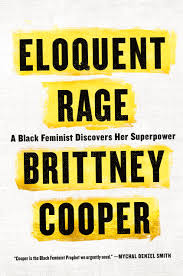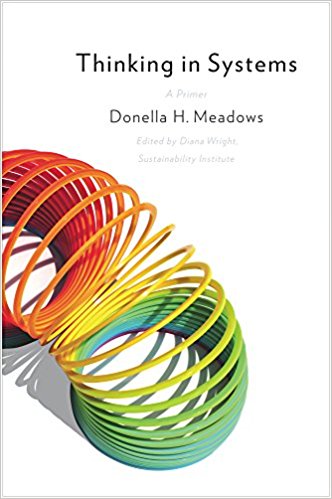Examine your car for dents
“When patterns are broken, new worlds emerge.” –Tuli Kupferberg
 One interesting thing about life is that at a certain point, it all starts repeating.
One interesting thing about life is that at a certain point, it all starts repeating.
Or perhaps that’s too simplistic: perhaps we don’t have to keep repeating our mistakes until we get them right, but rather must break the pattern to get to Discovery instead, that place where new worlds can emerge, looking hard with an open eye at those patterns and recognizing our way out of them rather than repeating our way out of them. Because, after all, doesn’t learning occur when we disrupt patterns? Is that what Madame Curie meant when she said that “dissymmetry causes phenomenon”?
What, after all, is a pattern? And when do patterns begin to shape and form our lives? When do we lose the ability to recognize and anticipate the patterns—and (when) do we regain that ability—or do we ever? How much of patterns depend on recognition? What does Recognition look like? Feel like?
 And what are my own patterns? Like those psychedelic holograms only recognizable from a distance, it’s so much easier for you to tell me about my patterns than it is for me to see them myself. So I need a circle of people who will do that—do I have them, do I hear them? As my friends Lora and David say, we all need someone who, when faced with our egregious behavior or bad manners or unfortunate choice of clothing or life mate—those many patterns of living—will simply say in a bright and cheerful voice, “Let’s go on a picnic!,” code words for taking you out to a lovely location near a burbling brook with high clouds and wildflowers, feeding you all manner of fantastic high-fat and satisfying picnic food, and then killing you, putting you and everyone else out of their misery.
And what are my own patterns? Like those psychedelic holograms only recognizable from a distance, it’s so much easier for you to tell me about my patterns than it is for me to see them myself. So I need a circle of people who will do that—do I have them, do I hear them? As my friends Lora and David say, we all need someone who, when faced with our egregious behavior or bad manners or unfortunate choice of clothing or life mate—those many patterns of living—will simply say in a bright and cheerful voice, “Let’s go on a picnic!,” code words for taking you out to a lovely location near a burbling brook with high clouds and wildflowers, feeding you all manner of fantastic high-fat and satisfying picnic food, and then killing you, putting you and everyone else out of their misery.
 Do I have someone who will take me on a picnic, who will see the patterns and reveal them to me, as my friend Kichom did in a quiet and astute shock of recognition recently during breakfast at Maggie’s Buns? I’m only now beginning to see (and admit) some of those patterns to myself; I’m only recently able to actively invite and hear and recognize as true the observations of others. I only hope it’s not too late.
Do I have someone who will take me on a picnic, who will see the patterns and reveal them to me, as my friend Kichom did in a quiet and astute shock of recognition recently during breakfast at Maggie’s Buns? I’m only now beginning to see (and admit) some of those patterns to myself; I’m only recently able to actively invite and hear and recognize as true the observations of others. I only hope it’s not too late.
 Those templates and patterns get formed very early in life. A friend recently realized that she lives in the world as an adult much as she played Monopoly as a child. Her relatives describe her as “ruthless” when playing for properties and small green houses, her money stuffed into a favorite little cowboy hat, always playing with an intense focus on winning, always going for broke, and always ending with a cowboy hat full of money and a board full of condos. And while I wouldn’t describe her as “ruthless” in her adult life, there is much of that same child in the intensity with which she approaches life now. Those patterns and dents start young.
Those templates and patterns get formed very early in life. A friend recently realized that she lives in the world as an adult much as she played Monopoly as a child. Her relatives describe her as “ruthless” when playing for properties and small green houses, her money stuffed into a favorite little cowboy hat, always playing with an intense focus on winning, always going for broke, and always ending with a cowboy hat full of money and a board full of condos. And while I wouldn’t describe her as “ruthless” in her adult life, there is much of that same child in the intensity with which she approaches life now. Those patterns and dents start young.
 How did I play Monopoly? How did you? I played to win, too, but with an external, sometimes aloof visage that said winning doesn’t matter, perhaps so failing didn’t hurt so much. And sometimes I didn’t even play, to avoid losing. It is still one of my patterns, if I’m awfully honest with myself, and one I’ve only started chipping away at in the past six months. And, as the nice nurse in the delivery room years ago said in response to my incessant teenaged calls when my older cousin was giving birth, “honey, these things take time.”
How did I play Monopoly? How did you? I played to win, too, but with an external, sometimes aloof visage that said winning doesn’t matter, perhaps so failing didn’t hurt so much. And sometimes I didn’t even play, to avoid losing. It is still one of my patterns, if I’m awfully honest with myself, and one I’ve only started chipping away at in the past six months. And, as the nice nurse in the delivery room years ago said in response to my incessant teenaged calls when my older cousin was giving birth, “honey, these things take time.”
 I love seeing little shoes without the child’s feet in them. They hold the essence of the child somehow, the shape of them, the way they are in the world. Their pattern of being and walking through life is in that shape. So in addition to looking at the dents in my car, I need to look down and see what’s grounding me, too. As Isaiah
I love seeing little shoes without the child’s feet in them. They hold the essence of the child somehow, the shape of them, the way they are in the world. Their pattern of being and walking through life is in that shape. So in addition to looking at the dents in my car, I need to look down and see what’s grounding me, too. As Isaiah






